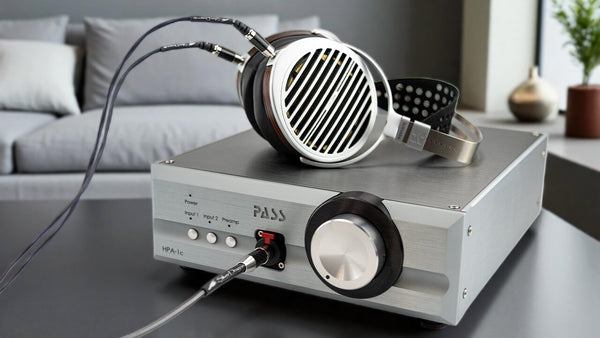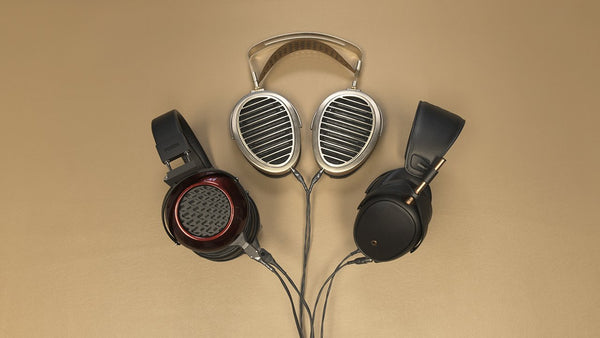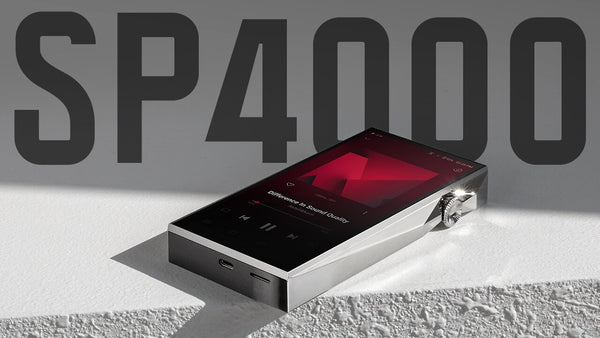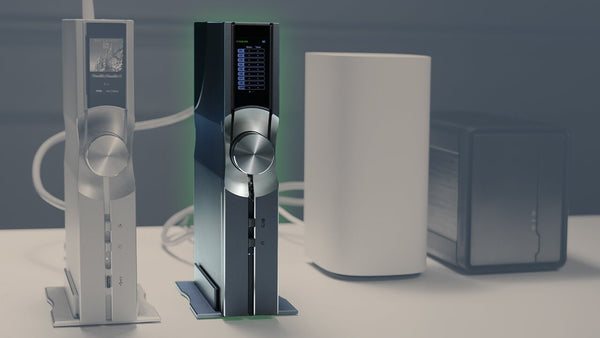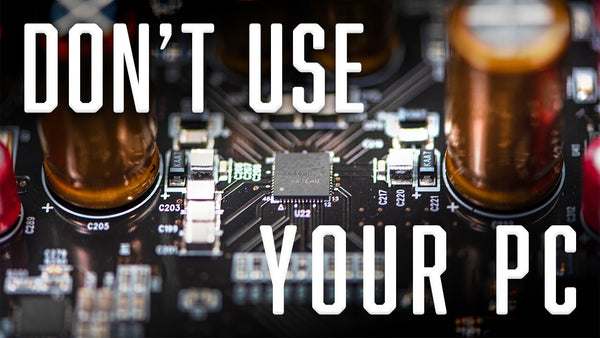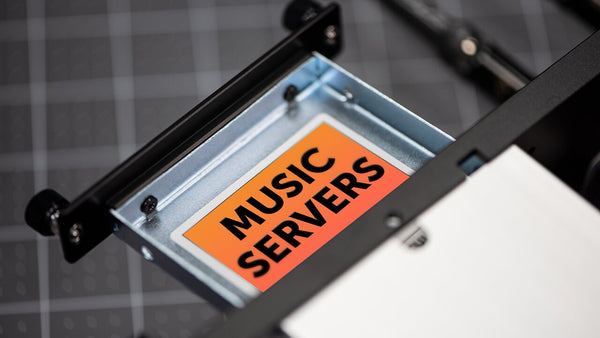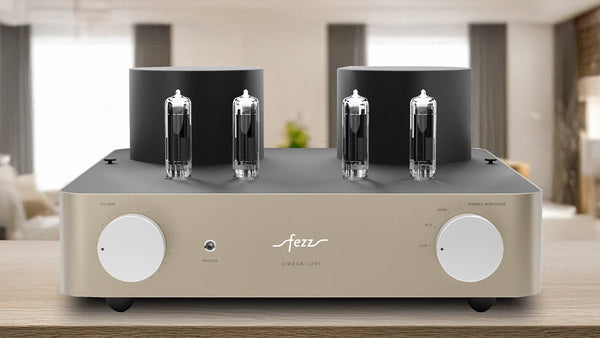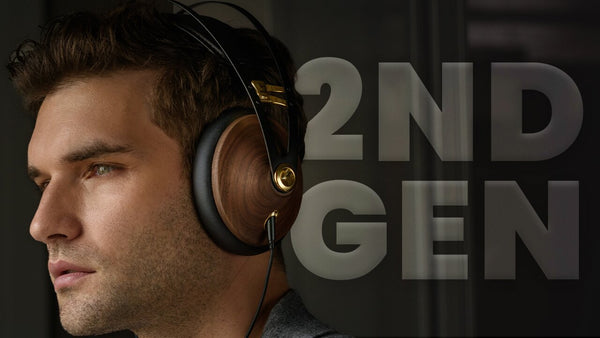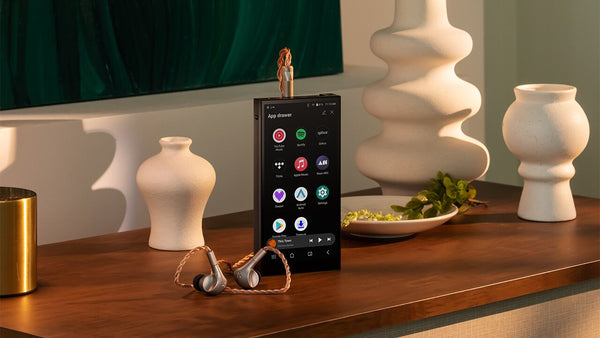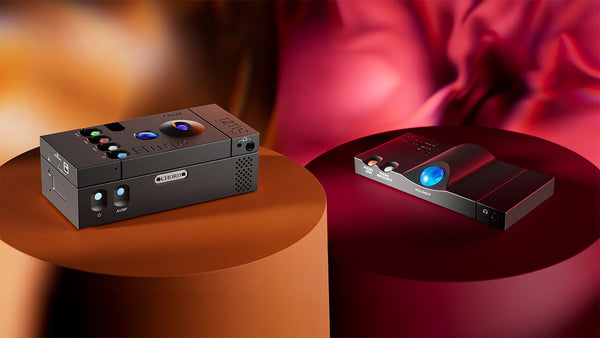Headphone Frequency Response Measurements & Why They Don't Matter
Read Time: Approx. 20 min.

Headphone Sound Quality: More Than Just Measurements
Headphone measurements are a surprisingly controversial topic in the audiophile community that constantly generates buzz. Whether discussing over-ear headphones, IEMs, or traditional earbuds, with every new release comes the question "What's the frequency response like?" "How does it sit on the Harman curve?" "What are the measurements?" and so on. From bass frequencies to treble frequencies, enthusiasts want to know it all. While an important thing to consider when buying an audiophile-grade headphone, there's not necessarily a hard and fast rule on whether headphone frequency response measurements really matter. While headphone measurements offer great insight into how a headphone handles everything from low frequency rumble to higher frequencies, it doesn't paint the entire picture of its sound quality and performance–especially when considering how it will interact with your unique ear canal structure.
BOTTOM LINE: Do use headphone measurements to give you an idea of what a headphone may sound like. Don't use it to decide whether you're going to like a headphone or not.
Why Headphone Measurements DON'T MATTER

PROS
- Great tool to use as a loose guide
- Offer insight into a headphone's performance and/or shortcomings
CONS
- Amateur and Professional measurements floating online
- Not always 100% accurate
- Not a clear indicator of sound quality
Headphone Measurements: What's the Big Deal?
I think we can all agree that one of the hardest things to shop for online is audio gear, whether it's over-ear headphones, earphones, or Bluetooth earbuds. We can't pick them up and listen so we rely on things like forum feedback, written reviews, and YouTube videos to get the bulk of our information. More often than not you'll run into a review or comment with headphone measurements attached, showing how the device handles frequencies from the lowest bass notes through the 1kHz midrange and up to the highest treble frequencies. Measurements can be a valuable tool to examine things like rolled-off high frequencies, too much bloom in the midrange, too much bass, too little bass, etc. But it's fair to say that there's no real way to understand what a headphone sounds like by just reading measurements. Why? Because headphone measurements aren't always accurate.

Many hi-fi manufacturers will perform headphone measurements during testing, using sophisticated measurement rig setups and high-end, reputable equipment from companies like Audio Precision and Head Acoustics. These measurements are performed in controlled environments, often using diffuse field techniques, and offer a fairly accurate gauge of the headphone's frequency response across the entire range of human hearing.

The flip side of the coin is individuals who purchase a headphone, test them, and release their own measurements–what I like to call homegrown measurements. I'm sure you've seen the forum chains before with about ten different measurements on there and no two are the same. That's because these measurements were probably performed in a makeshift studio in their house with some cardboard and microphones, often using inconsistent test tones and measurement techniques. Maybe not cardboard, but you get what I'm saying. As a consumer, you have to be wary of these measurements and use your best judgment, because poor headphone measurements can paint a bad picture of what a headphone can sound like, especially with bass-heavy models where precise measurement is crucial. Be cautious of reviews that rely more on measurements for an accurate gauge than their perception and opinion. I know we've all got opinions, but in this case they're warranted and welcomed.
What are Headphone Measurements and What Does it Measure?
A headphone measurement is essentially a graph that measures the frequency response of a headphone against a target. The target can be a universal one recognized by all like the Harman Curve or one created out of thin air by the reviewer themself. A good target will be one that takes into account the varying degrees of human perception, but there are still limitations to headphone measurements and target curves. Why? We all hear differently and no two listening environments will be the same.

Pictured: Frequency Response Graph
What is Headphone Frequency Response?
A headphone frequency response is the range of audio frequencies that a pair of headphones can accurately reproduce. Typically you'll see headphones with a rating of 20Hz to 20kHz. A wider frequency response can equate to a more complete and detailed sound.
One thing we can't deny though is that headphone frequency response is an important parameter in headphone development. If you've got a headphone with a non-ideal headphone frequency response, no matter the target curve, it won't be accepted well by consumers. So from a manufacturing standpoint, headphone frequency response has to be measured and considered. But headphone frequency response alone is not descriptive enough to tell us–the consumers–everything we need to know about a headphone's sound quality and performance.
We all perceive sound differently and what sounds good to one of us may sound awful to the other. Even the very best target curve can't accurately represent every headphone listener and their preferences. And also safe to say that a headphone could have more than one frequency response.
The Accuracy of Headphone Measurements
Getting an accurate headphone measurement is highly technical. You want to use the very best equipment, calibrated and set up to a T. You don't want there to be any leakage and ideally you want to do it in an anechoic chamber. You've got to account for things like the angle of the driver, the listening environment you've set up in, etc. Then there's the target curve. Will you be using the Harman Curve? There's a lot of controversy over that, which we'll get to. Will you make your target curve specific to your listening environment and habits? Or will you try to create one that you think appeals to the masses? All of these tiny elements play a factor in the accuracy of a headphone's measurement.
What is the Harman Curve?
The Harman Curve is a target curve that measures from 20Hz to 20kHz. This measurement was determined by identifying what the most pleasurable frequency response for most people is, and it's used by most headphone manufacturers during the tuning stage. The Harman Curve can be characterized as neutral sounding. It's a great sound that appeals to many genres and most listeners, but it can feel dull and flat to those who crave a rich, lively sound.

Does the Harman Curve really Matter?
While many will follow the Harman Curve's ideal frequency response for headphones, there are some manufacturers who don't. Take HiFiMan for example. Most of their headphones have a frequency response that's anywhere from 6Hz to 85kHz. Specifically, the SUSVARA UNVEILED Headphones have a frequency response of 6Hz to 75kHz. Now, the human ear can hear some of these frequencies, but most harmonic frequencies under 20Hz tend to be more of a feeling rather than a sound–and same with those above 20kHz.
So with the SUSVARA Unveiled, once you get into the 65kHz range you won't technically hear anything but you'll feel a sense of energy and liveliness to the music. Below 20Hz you'll experience the subharmonic frequencies which can feel like the thumping of a bass, maybe a womp or wub. Those "illusions" are my favorite parts about listening to headphones, so I particularly enjoy headphones with wide frequency ranges.
On the flip side, Dan Clark Audio's newest headphone the Noire X Headphones are tuned to closely follow the Harman Curve. Dan Clark Audio is a manufacturer who likes to keep their measurements and specs close to their chest, but it's common knowledge within the audiophile community that they tend to follow a harman-style tuning. Do we know the exact frequency response of the Noire X? No, but based on the sound characteristics and several measurement graphs done by varying reviewers, the consensus is that they fall in line with the curve and deliver a neutral, natural sound.
So Is there a good frequency response for headphones? Universally, 20Hz to 20kHz will be considered the "good" frequency response for headphones. That's because it's heard by almost everyone (excluding those with hearing deficiencies). I would consider it more of a safe bet than a good frequency response. What's considered "good" is determined by the listener and their tastes.
Reading and Interpreting Headphone Measurements
Understanding how to read and interpret a headphone measurement graph is an important key to deciphering between accurate and poor measurements. So below we've got an example headphone measurement graph here for a pair of Ultrasone Edition 10 Headphones done by Innerfidelity. These headphones have a frequency response of 5Hz-45kHz.
You'll notice a huge spike at around 4,000-5,000kHz, which can be an indicator of sibilance issues. I say "can" because these measurements are meant to be taken as guides, and you won't truly know until you listen for yourself. The overall consensus for this headphone by reviewers is that it has definite reflections, which causes very sharp spikes like this, but that aside it was a really great-sounding headphone. In the middle of this graph, you'll see a dip, right around roughly 2,000kHz. This is considered a recessed midrange.

When using headphone measurements as a tool for headphone buying, identify what sound you're looking for an resonate with. If you want a headphone with good bass response, look at the lower frequencies of the graph. Do you see a nice bell-shaped curve that gives you some oomph at the bottom end? If you're sensitive to high frequencies, look closely at the top side of the graph. Are there any noticeable spikes? If you want really good vocals, check out the midrange of the graph. If it's really recessed compared to the treble and bass, the headphone might not have super prominent vocals.
Why do Different Headphones have Different Measurements?
FACT: No two headphones are created equally.
FICTION: Headphones with the same frequency response sound the same.
If every headphone manufacturer made headphones out of the same materials with the same drivers, specs, and design, we wouldn't have an entire market and more importantly we wouldn't have different sounds. Every headphone driver has a different sound field, parameters, impedances, resistances, etc. Some headphones are open and some are closed. Open-back headphones often have a wider soundstage than closed-back. A frequency graph won't tell you that point blank. Head Acoustics is a great example of an industry professional making headway in measuring beyond the eardrum and into the cochlear. They're now measuring on more than just frequency, taking into account distortion, immersion, timbre, etc., and using those measurements to see whether a headphone has a sense of soundstage. Hence sense, because you won't know for sure until you give the headphones a listen. It's a fairly inquisitive topic discussed in a YouTube video starring Dr. Hans W. Gierlich of Head Acoustics–check it out.
Headphone measurements will tell you about reflections, trebly peaks, etc., but it won't consider the ear pads on the headphones that depending on the material, can absorb reflections better than ear pads made of something else. If you and I buy the same headphones but I swap my ear pads and you don't, chances are we could have two different measurements–even if we test in the same space with the same equipment.
Different headphones will yield different measurements solely based on the materials and efforts used by manufacturers to change tonality, mitigate reflection and trebly peaks, and so on.

For example, in the graph above three Sennheiser Headphones, the HD 820, HD 800, and HD 800S were all measured by Head-Fi.org. The HD 820 is the only closed-back headphone of the trio, so compared to the more linear frequency response of the open-back cans it looks a bit different. The HD 820's were specifically designed to mimic a soundstage similar to an open-back headphone, resulting in a transparent and natural sound. But at the end of the day, they are closed-back headphones so taking that into account, Head-Fi.org compared the HD 820 to another closed-back headphone, the Sony MDR-Z1R.
The HD 820 Headphones have a frequency response of 6Hz to 48kHz, while the Sony MDR-Z1R Headphones boast a frequency response of 4Hz to 120kHz. As someone who has listened to both of these headphones, here are the takeaways: The Sony MDR-Z1R delivers incredible low-end bass response, perfect for high-energy genres. The Sennheiser HD 820 is very resolving for a closed-back headphone but has a nice bass response that's in line with closed-back cans.

The Bottom Line: Use Headphone Measurements as a Guide
Headphone measurements are a great tool for telling you the shape of a headphone–like when a headphone has a V-shaped sound. A headphone measurement will tell you whether there's a trebly peak that'll be sibilant or if it's got quite a bit of roll-off on the bottom end. But that still doesn't tell you whether you'll like the sound of the headphones or not. Our advice for online headphone shopping is to watch and read reviews. Look at measurement graphs, but be diligent and cautious. If you know you like a V-shaped sound, you can easily identify headphones with measurements that reflect that fun, lively sound. But don't forget that headphone measurements only offer a glimpse into a headphone's sound quality and performance. Trust the opinions of credited reviewers, friends, and fellow audiophiles–and when you can, listen before you buy.
"Don't put all of your stock into a frequency response, or the numbers, or the measurements. At the end of the day the bottom line is, how does it sound to your ears?"
- Drew Baird, P.E., Moon Audio CEO & Founder
Related Videos
Why Headphone Measurements DON'T MATTER
Top Audiophile Headphones of 2024: Entry to Endgame
How to Pick Your Perfect Pair of Headphones





